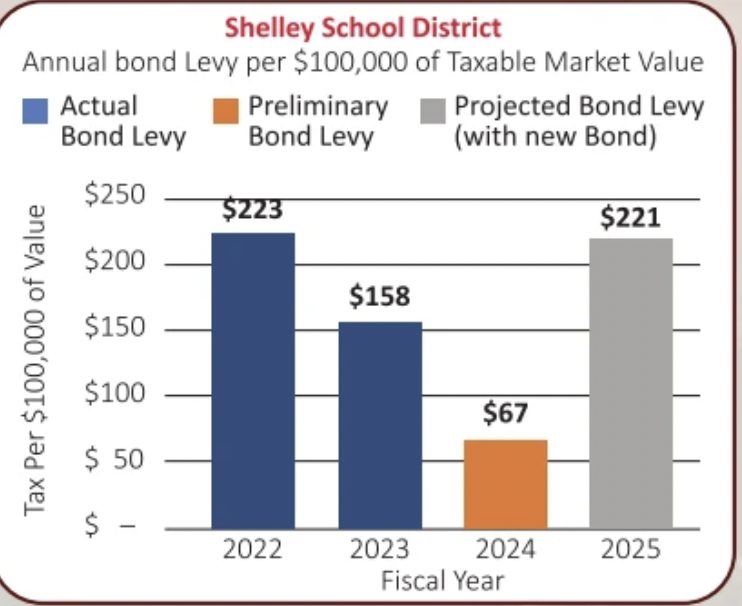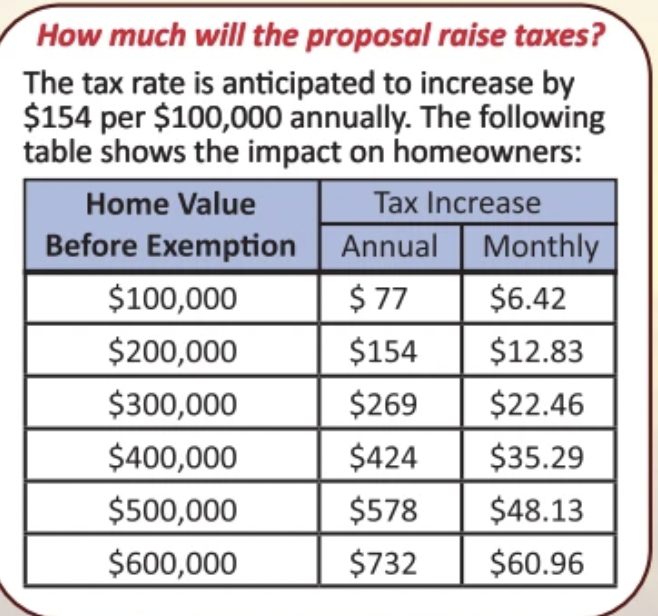SHELLEY — In rural East Idaho, a tiny school district is making a big bet: that voters will approve a $67.8 million bond measure for a new high school.
Statewide, it’s the biggest education ask on the November ballot.
The odds of any bond passing in Idaho are less than a coin toss, thanks in part to the required 66.67% supermajority approval — one of the highest thresholds in the nation. And in smaller communities, passing bonds of this size can be especially unlikely since fewer residents can mean larger tax burdens.
But in Shelley, a small community surrounded by farmland — where russets are the mascot and its one high school is dubbed ‘the spud cellar’ — Superintendent Chad Williams seemed hopeful as he ran through the numbers.
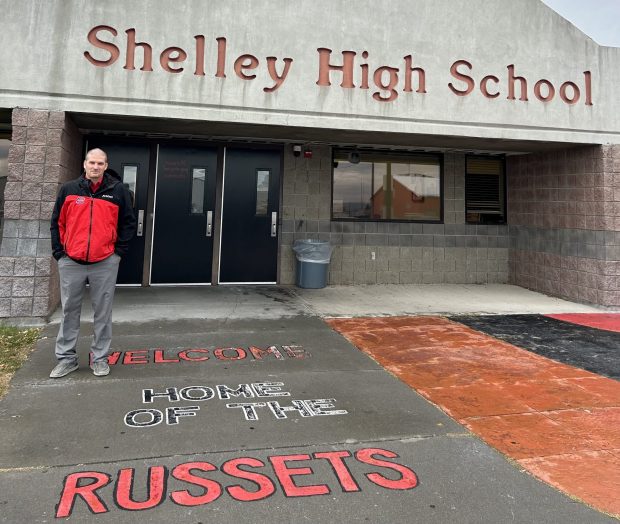
There’s the history of school election success, with the district’s last two bonds earning well over supermajority approval. Supplemental levies typically pass as well.
Shelley School District’s recent bond election history
| Election date | Bond amount | Pass rate |
| March 2021 | $7.5 million | 78.7% |
| March 2007 | $12.4 million | 73.7% |
There’s the slow, steady growth (about 50 new students a year) that establishes a need for more classrooms.
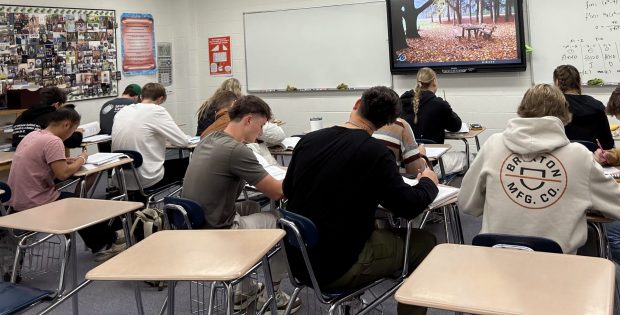
There’s the community feedback, gathered over multiple years, that he said showed strong support for a new high school.
There’s the fact that the high school is already nine classrooms short — they’ve been tacked on hodge-podge outside the building in places like add-on modulars and a concessions building, which were intended to be temporary solutions.
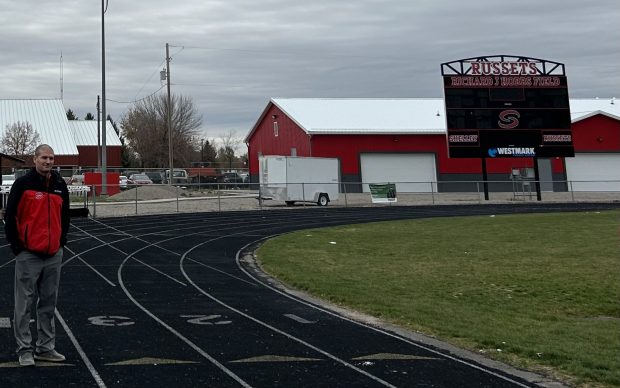
And there’s the district’s extensive outreach — 11 different methods by Williams’ count, including a town hall meeting, social media posts, the district website, a flyer, emails, and news articles. Williams has even presented the bond information to government classes at the high school.

Plus, Shelley’s residents include many “homegrown spuds,” as Williams called them — people born and raised there who now have their own families, deep community roots, and a pride in their local schools.
Still, Williams knows it’s not a done deal.
Bond critics have said it’s both too much and not enough
There have been critiques and opposition — including a message blared on a digital billboard on the highway between Shelley and Idaho Falls, where a number of residents commute: “Nov. 7 Vote No On The Shelley School Bond $67,800,000!! In New Taxes.”
The billboard was paid for by Idahope, a conservative political action committee based in East Idaho and formed in 2017.

“Much like the minutemen of Concord and Lexington, our goal is to be always organized, prepared, and funded, so we can fight for local causes of Liberty and Freedom on a moment’s notice,” the group’s website reads. “In our fight for these principles, we sometimes have to fight against bigger government, higher taxes, encroachments on our freedoms, and other threats.”
But at a recent community meeting, Williams heard the opposite complaint: why isn’t the district striving to make an even bigger high school? (The one proposed at the $67.8 million price tag will only accommodate growth until 2040.)
His answer: “It’s the biggest school that we could afford right now.”
That’s because the district is hamstrung by Idaho code — which dictates that a bond measure can only run for up to 5% of a school’s market value (the smaller the district, the less it can ask for).
For Shelley, it means their facility growth has to be incremental. But, Williams said they’ll design the building so it has room for future additions.
A property tax relief bill has complicated bond messaging
Another hotspot for confusion is the impact the bond would have on taxes if it were passed. What’s making it complicated is the Legislature’s property tax relief bill, House Bill 292.
The state funds are lowering individual property taxes. But if a district passes a new bond or levy, homeowners won’t see the relief — but they also won’t see a big tax increase.
District leaders are having to decide how to incorporate that reality into their communications about bonds and levies. Do they use it to classify a new bond or levy as having net zero impact, like Pocatello/Chubbuck (the only other district running a bond on Nov. 7)? It’s a choice that has already fueled criticism.
Or do they explain to taxpayers that passing a bond would mean missing out on that relief?
Williams has opted for the latter.
He’s explaining to patrons that their taxes without the bond would be about $67 per $100,000 of their home’s taxable market value. With it, they’ll jump to $221/100K.
But Williams also points out that would be less than they were paying in 2022.
When patrons have understood that, Williams said they are comforted — it’s an amount similar to what they paid in the past, so they know it’s doable on their budget.
With election day fast-approaching, the matter is in the hands of Shelley voters.
Tracy McArthur, a math teacher at Shelley High, said she commutes in from Idaho Falls, so won’t be among those who cast their ballots. But she’s hoping the measure is successful.
“The school is going to grow, and we’re going to be so crammed in here,” she said. “The classes are going to get huge and it’s going to be a lot harder to help individual students grow and learn.”

